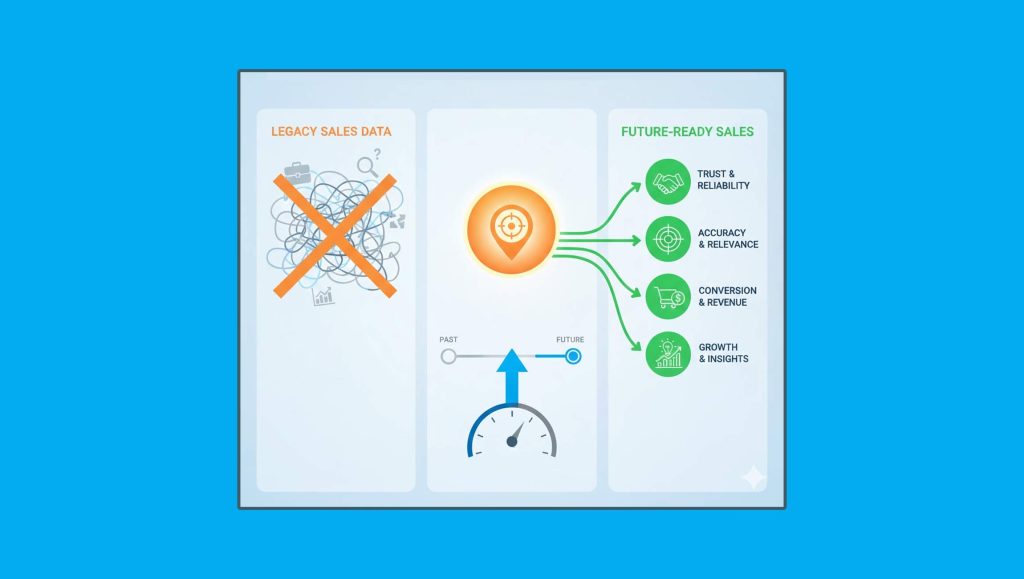The task of a sales leader is made easy with the right data and analytics. As a sales leader, you need to stay on top of the entire sales team’s efforts and make sure that every team member is meeting expected standards and quotas. The right inside sales analytics can help gauge all of this while also correcting processes to help achieve better sales results. Sales analytics offers you an insight into the expected future trends and the actions you ought to take.
Do you already get the maximum out of your inside sales analytics? Here are a few ways to help you measure inside sales analytics better.
- Outbound Prospecting: – This helps measure the activities of your sales team that are focused on prospecting for new customers or seeking existing clients suitable for upselling and cross-selling opportunities. There are some essential metrics under outbound prospecting which you must focus on while assessing your sales analytics, i.e:
Emails per day: – Total number of sales and promotional emails sent by every team member.
Dials per day: – Number of attempts undertaken to call the sales prospects.
Call Duration: – Average duration of the calls to understand the efficiency of sales reps.
Number of conversations: – Measures the total instances in a day when the sales reps actually interact with a client.
Voicemail return rate: – Describes the number of times the reps are successful at getting callbacks from the leads.
Call disposition: – The aggregate outcome of the calls made by the sales team in a day.
Contact attempts: – Number of times that a prospect is contacted through phone or email in a day.
Call volume vs. goals: – Number of calls made by the sales rep in comparison to the target.
Dial to connection: – Calculate the percentage of dials that results in answering of the phone.
Data accuracy: – Percentage of contact details that are accurate in a contacts list.
Click through rate: – Percentage of sales emails that are opened by customers.
Dials to deal ratio: – Number of dials required to meet the sales target of the team.
Read More: Top Video Search Engines
- Inbound Lead Response: – This takes care of the response of your sales team to the various inbound sales queries received. The essential metrics that come in handy here are: –
Follow up rate: – How often the sales team follows up on an inbound query.
Time to first response: – Time taken to respond to the sales query.
Abandonment rate: – Percentage of calls that are hung-up due to no-answering
Hold time: – How long the prospects have to wait before connecting with a sales representative.
Average response time: – Time taken by the reps to respond to a query from prospects.
Inbound leads per product: – Incoming leads in regard to different products.
Lead response time: – Effect of lead response time on the conversion of the prospect.
Listen In–> To the Latest Episodes of The SalesStar Podcast!
- Working opportunities and closing deals: – This helps assess available working opportunities and closing of deals. The key metrics involved here are: –
Opportunity revenue: – How much revenue can a sales rep generate from open leads.
Open opportunities: – Total open opportunities converted from leads.
Contact attempts: – Number of attempts made by a sales rep to connect with an open opportunity.
Opportunities vs. Goal: – If the sales rep are creating an adequate number of opportunities.
Average age: – Average duration for which the opportunity has been open.
Dial to opportunity: – The number of dials that help create an opportunity.
- Predicting success and measuring revenue: – This is concerned with the chances of success and measurement of the revenue generated. The key metrics involved here are: –
Average deal size: – Aggregate price of the deals.
Pipeline value: – Revenue to be generated if all opportunities are closed.
Closed Lost %: -Percentage of lost opportunities.
No Decision % – Percentage of opportunities lost due to no decision being made.
Win Rate: – Number of opportunities won by the sales team.
Quote margin: – Average profit from selling a product or service.
Age in stage: – Number of days of the opportunity in a particular stage.
Competitive deals %: – Percentage of deals where you are competing with others.
Close Date Moves: – Number of times that a close opportunity date has moved.
Win/Loss Ratio: – Percentage of opportunities that are closed against total available opportunities.
Reason for Loss: – The reason because of which an opportunity was lost.
LVR: – Growth of inbound lead flow over a period of time.
Referrals: – Opportunities available from referrals, affiliates, partners, or referral programs.
Customer lifetime: – Hoe long a customer remains with the company.
CAC: – Customer acquisition cost in terms of sales and marketing.
Win Rate: – Measuring the won opportunities according to campaigns
Pipeline inflow vs. Outflow: – Number of new opportunities every month vs. closed opportunities.
Read More: SalesTechStar Interview With Tim Nash, Healthcare Head Of Global Sales At Virtustream
- Customer Retention and Success: – This helps measure your customer retention rate and overall success rate. The key metrics involved here are: –
Churn Rate: – Customers who do not renew their contracts or do not make repeat sales.
Retention rate: – Number of customers who continue the relationship with the company.
Free to paid conversion: – Percentage of customers upgrading from free to premium.
Sessions per day: – Number of times that the customer is logging-on to your service.
Onboarding time: – Time taken to get the customer up and running after contract signing.
Lost revenue: – Revenue being lost due to customer churn.
Revenue growth: – The percentage of increase in revenue from a customer through upselling and cross-selling.
Customer Retention Cost: – The cost incurred to retain a customer.
As a matter of fact, data analytics is your best friend as a sales leader today. It takes out the uncertainty from the sales process and allows you to determine a clear path into the future. No wild guesses or acting on a hunch, take decisions based on pure facts provided by the right sales analytics to strengthen your overall sales process.





















